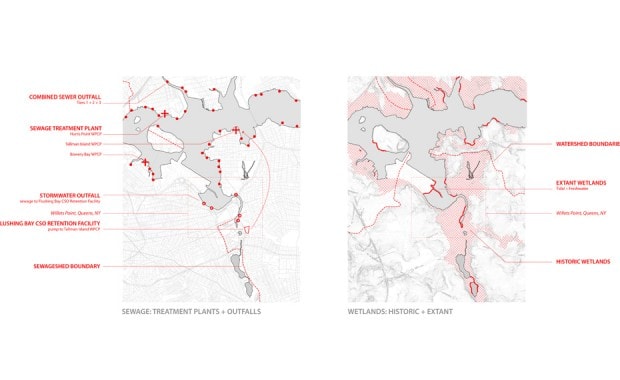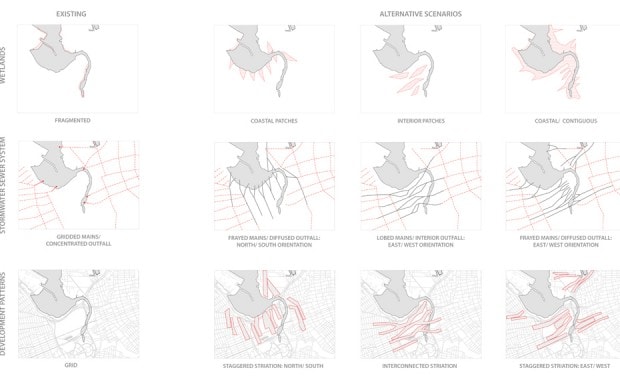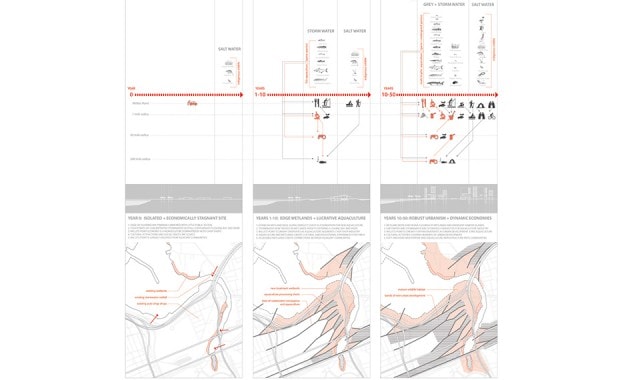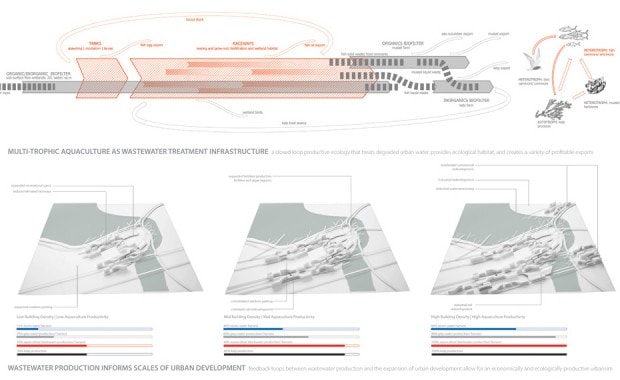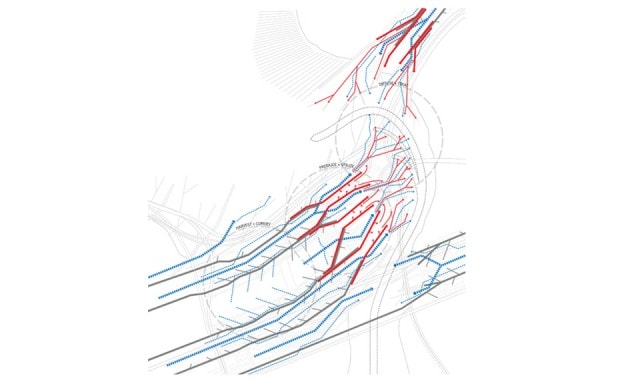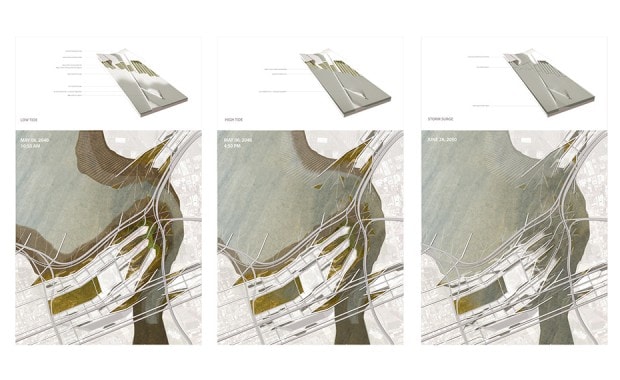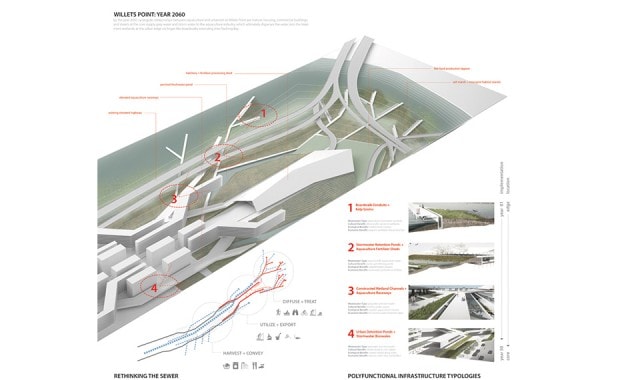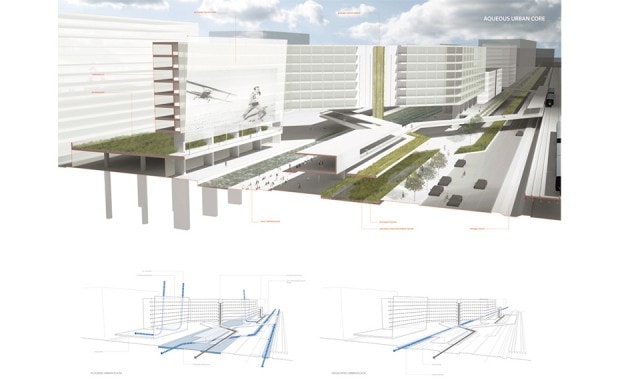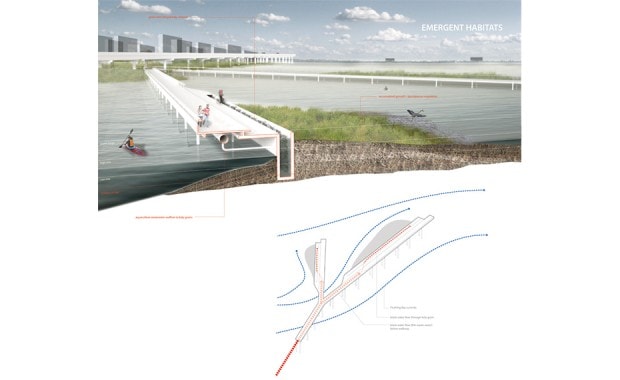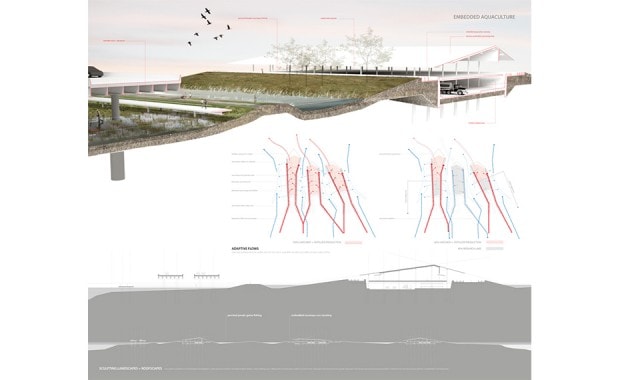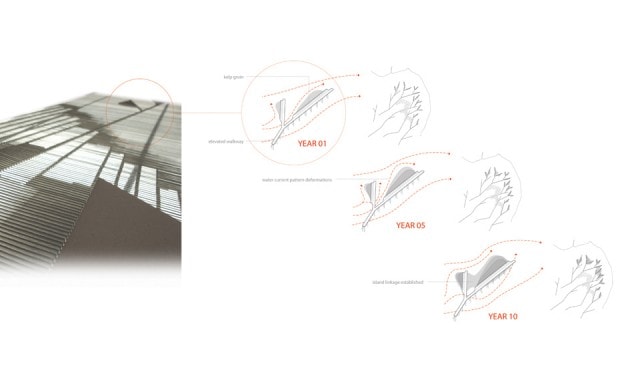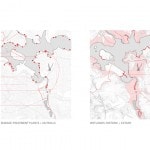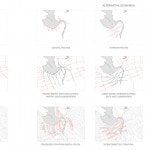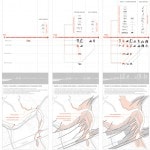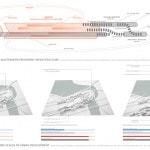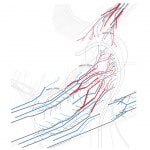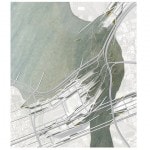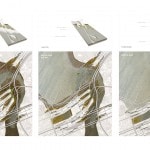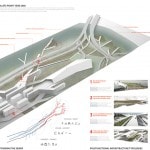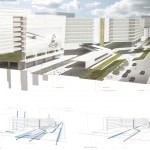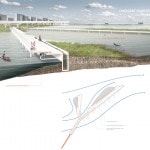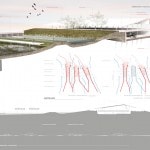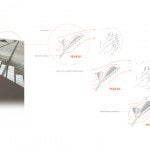Project: Aqueous Ecologies
Location: Willets Point, NY
Designer: Michael Ezban
Year: 2013
Program: Harvard University Graduate School of Design
Faculty Advisor: Chris Reed
Project Description: ‘Aqueous Ecologies’ imagines a future for Willets Point, a derelict peninsula in Queens, NY, in which new ecologies, economies, and cultural identities of the city are intertwined with landscape-based solutions for adaptive, polyfunctional, and publicly accessible wastewater management and treatment. Aquaculture becomes a foundation for an ecological urbanism.
Rather than starting with a traditional masterplan, this project proposes a productive ecology of multi-trophic aquaculture (closed-loop fish farming) as a catalyst for urban development. A 50-year process for cultivating aquaculture and urbanism at Willets Point increases wildlife biodiversity and creates cultural and economic synergies over time, at both local and regional scales. Over time, synergistic relationships between aquaculture and urbanism mature, establishing the urban core as a greywater and stormwater supply for a burgeoning aquaculture industry.
At areas of high urban density, waters flow through hard- and soft-bottom channels, from sidewalk swales to plaza basins. The alternating conditions of saturation and desiccation at these urban spaces foster a dynamic range of recreational and commercial activity. At the littoral zone of Willets Point, the character of the landscape is quite different. Biotic succession and daily tide dynamics are evident in the expansive salt marshes, while kelp cultivation groins — thriving on aquaculture wastewater — extend into Flushing Bay, becoming armatures for sediment accumulation and spontaneous vegetation. The kelp can either be exported into culinary and medicinal economies, or remain within the aquaculture system as processed fish meal.
Public access throughout the littoral zone, via boardwalks that convey wastewater for treatment, allows for immersive cultural experiences and an opportunity to experience the dynamism of succession and daily tide dynamics. Processes of sediment deposition and accumulation against these boardwalks lead to the emergence of publicly accessible habitat islands. During storm events, public activities shift to elevated civic spaces that float above temporarily flooded civic spaces. The raised infrastructure connects to existing elevated transit lines and roof gardens and allows aquaculture and wastewater filtration to intertwine at multiple levels within the fabric of the city.
Featured in Scenario 3: Rethinking Infrastructure
| previous project | next project |
